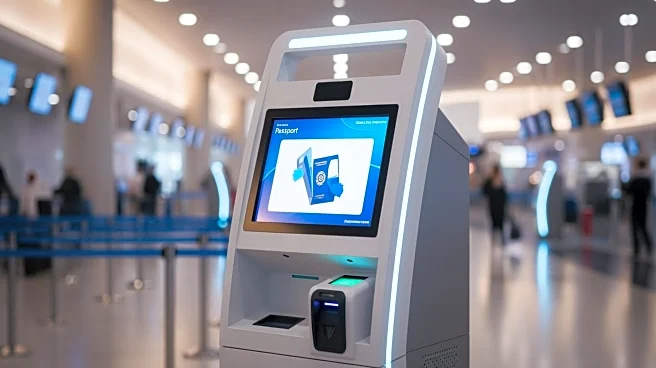What's Happening?
The Bandaranaike International Airport (BIA) in Katunayake has installed twenty new self-check-in kiosks, increasing the total number to 28. This initiative, undertaken by BIA in collaboration with Airport and Aviation
Services (Sri Lanka) (Private) Limited and SriLankan Airlines Ground Handling, aims to streamline the check-in process and alleviate congestion during peak travel hours. Deepal Pallegangoda, Airport Chief of SriLankan Airlines Ground Handling, highlighted that the new kiosks are designed to improve efficiency and provide a smoother experience for travelers.
Why It's Important?
The introduction of additional self-check-in kiosks at BIA is significant as it reflects a growing trend in airports worldwide to enhance passenger convenience and operational efficiency. By reducing wait times and congestion, the airport can improve customer satisfaction and potentially increase its capacity to handle more passengers. This move is particularly important for Sri Lanka's tourism industry, which relies heavily on efficient airport operations to accommodate international visitors. The enhanced check-in process can also contribute to better resource management and reduced operational costs for airlines and airport services.
What's Next?
As the new kiosks become operational, BIA may continue to monitor their impact on passenger flow and overall airport efficiency. Future steps could include expanding the self-service options to other areas of airport operations, such as baggage handling and security checks. Stakeholders, including airlines and airport authorities, might explore further technological integrations to enhance the travel experience. Additionally, feedback from travelers could inform subsequent improvements or expansions of the self-check-in system.
Beyond the Headlines
The expansion of self-check-in kiosks at BIA may also have broader implications for the adoption of technology in airport operations. It highlights the increasing reliance on automation and digital solutions to address logistical challenges in the aviation industry. This trend could lead to a shift in workforce dynamics, with a greater emphasis on technical skills and customer service roles. Moreover, the move aligns with global efforts to reduce physical contact and enhance safety in public spaces, a priority in the post-pandemic era.














